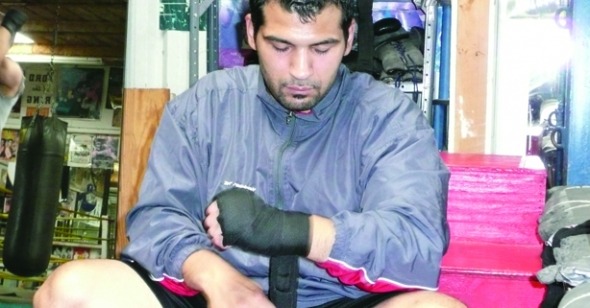One More Dance
by Farihah Zaman
Boxing Gym
Dir. Frederick Wiseman, U.S., Zipporah Films
Frederick Wiseman is nothing if not consistent. From the classic, groundbreaking 1967 Titicut Follies, about a crumbling Massachusetts insane asylum, to 2009’s critically adored La Danse: The Paris Opera Ballet, the formidable filmmaking icon has stringently employed the techniques that have become synonymous with his name. His form of documentary purism—applied to an astonishingly wide range of topics, from the inner workings of state government (State Legislature) to the evolution of a silver mining town into a playground for the rich (Aspen)—relies on immersion and meticulously edited observation rather than subtitles, narration, interviews, establishing shots, or any of the other tools that most nonfiction filmmakers depend on to construct their stories and propel them forward. Wiseman’s avid fans have learned that observing any subject through his astute eyes for a long enough period of time results in a layered, affectionate understanding it might otherwise have taken years of actual experience to develop. His latest, Boxing Gym, is more of the same in the best way possible, rooting beyond the surface sheen of glamour and violence in boxing to find a community of passionate, hardworking people.
For most, the idea of boxing conjures images of bloody spectacle, of heavily publicized fight nights headlined by superstar athletes like Joe Frazier or Oscar de la Hoya. This particular facet of the sport—basically the industry side—is a far cry from the scene at Austin, Texas’s Lord’s Boxing Gym, an establishment that has been around for decades and is still run by its founder, Richard Lord. A brief visit to the Lord’s Gym website imparts a clear sense of its values, including promises of no “people with fake tans and spandex,” but rather “a community of like-minded individuals.” Just a few minutes of Wiseman’s quiet observational strategy reveals a friendly, family-oriented facility. The clientele ranges from serious wannabe professional boxers to unruly children in need of some discipline to working mothers with infants waiting to nurse as mommy does a few rounds on the punching bag. Wiseman captures conversations both mundane and meaningful over the shoulders of the trainees, giving us a vivid slice of Austin life.
Over time it becomes clear, however, that the wordless moments of this film are just as important. We learn that boxing primarily consists of simple, old-fashioned, gruelingly repetitive work—punching the speed bag, jumping rope, practicing footwork, doing a (slightly homoerotic) leapfrog exercise in an endless chain around the ring. The ear begins to pick up on the rhythms of these actions in every scene, even in the background of those focusing on words, and a larger structural cadence develops in the back and forth between people’s intense interactions with the gym equipment and their more mellow relationships with one another. As these shots of training drills increase in length and scope, the camera panning out to finally present a view of the entirety of the gym, the rhythms generated by individuals in their own, focused bubbles seem to fuse into a single, multiperson organism.
Boxing Gym seems at first to be a particularly dramatic turn following La Danse, but in fact these films are structurally and thematically quite similar; each explores a glamorized craft that comes with a host of superficial preconceived notions, and then peels back the stereotypical outer layer to reveal the truth. In the case of ballet, people imagine the entire process to reflect the romantic and elegant end result—the reality is that the beauty of the dance is achieved only through rigid discipline that often takes an ugly toll on the body. When it comes to boxing, one imagines two people brutally, gracelessly rushing at one another—yet there’s an undeniable elegance to its choreography and in the skilled economy of motion that it takes to make a fight possible.
Although the film culminates in an actual boxing match in the ring at the center of the gym, and which is depicted as a traditional showdown between two snorting muscular men, the perspective on this event has been completely altered by the awareness of the work that leads up to it. Like an elaborate dance, the fight functions as a beautiful amalgamation of the various drills that we have witnessed throughout the film, and we are able to recognize and appreciate the deftness of the hands and the lightness of the feet. On the other hand, after becoming used to the repetition of training and exercise, the idea of people pitting those familiar movements against one another is once again novel. The occasional irregularity of motion, the interruption in rhythm, the messy hair and the bloody noses seem particularly jolting—these confront the audience with the reminder that while violence is not the only element in the boxing gym, it is not entirely absent either.
